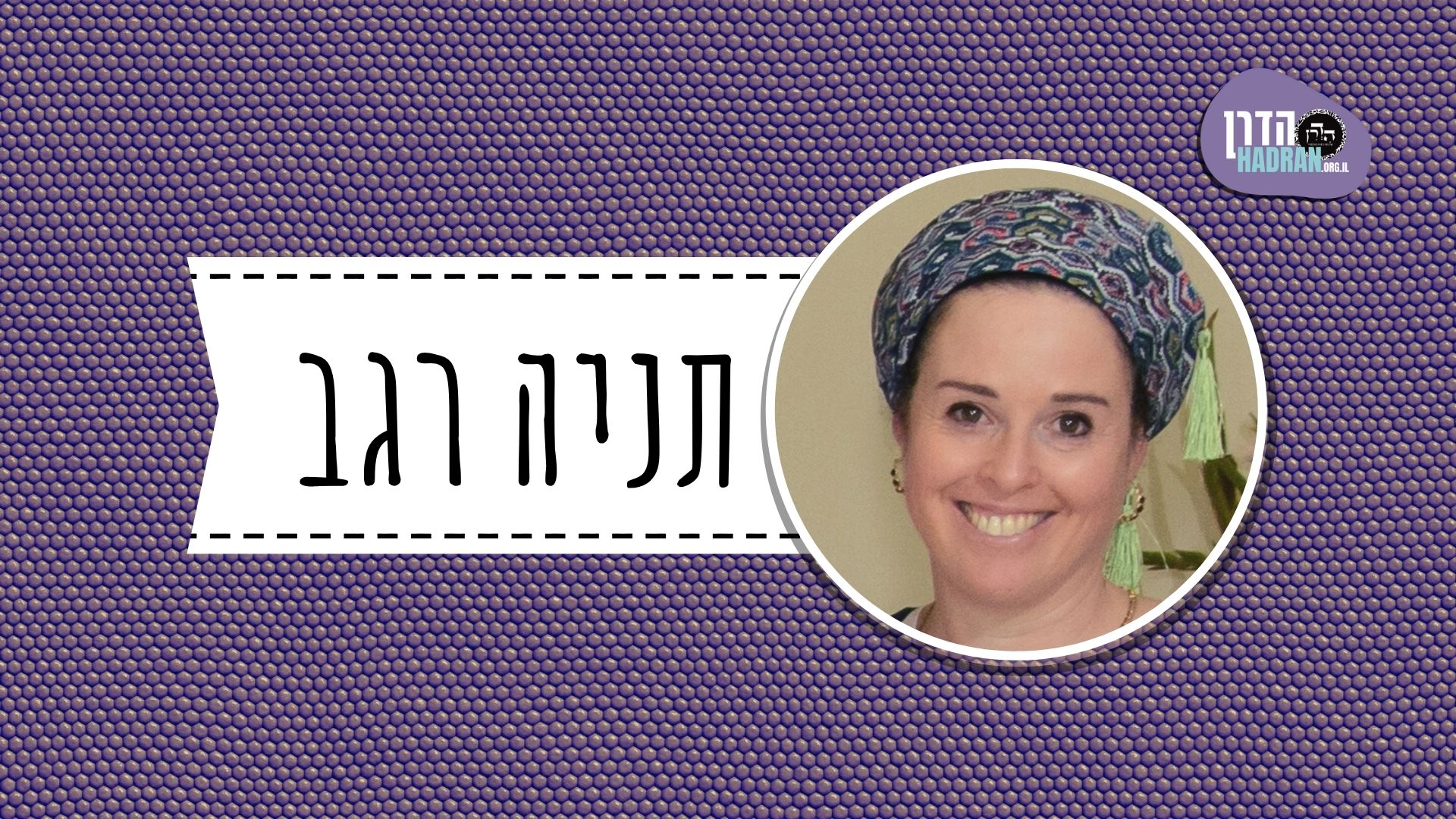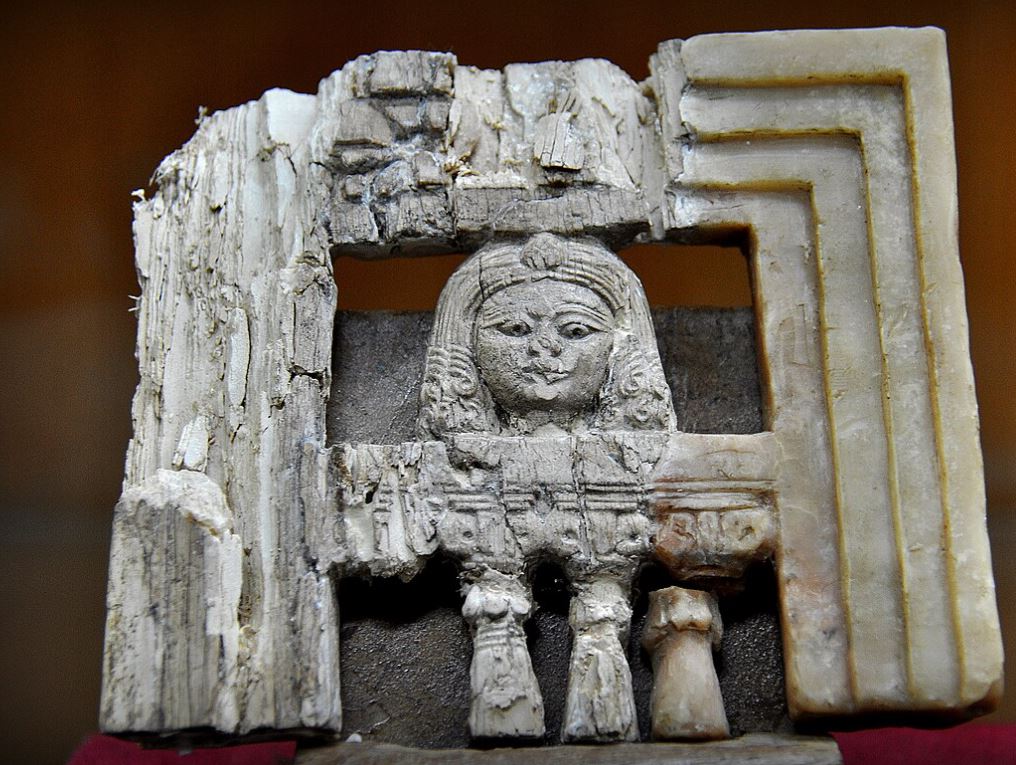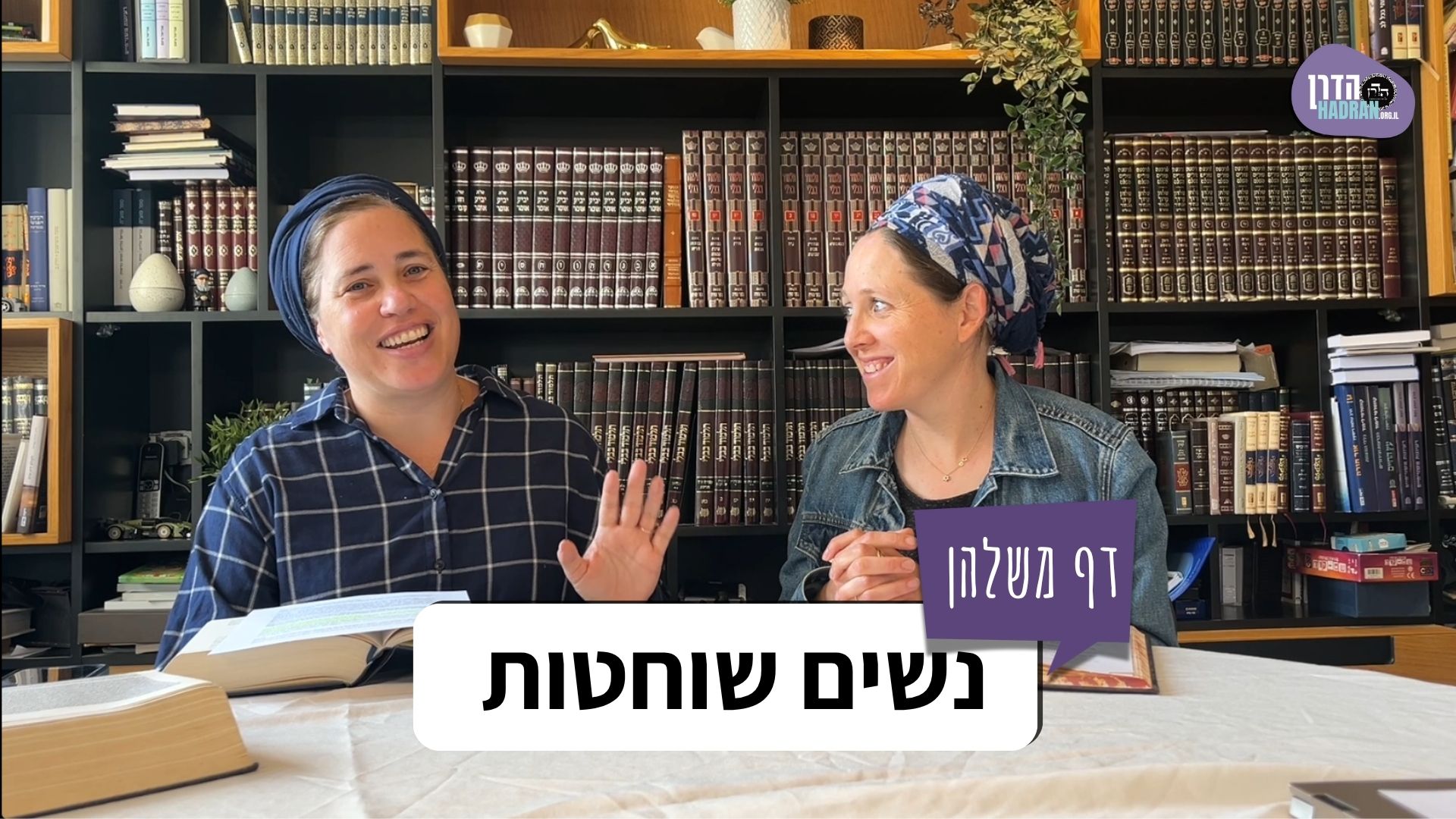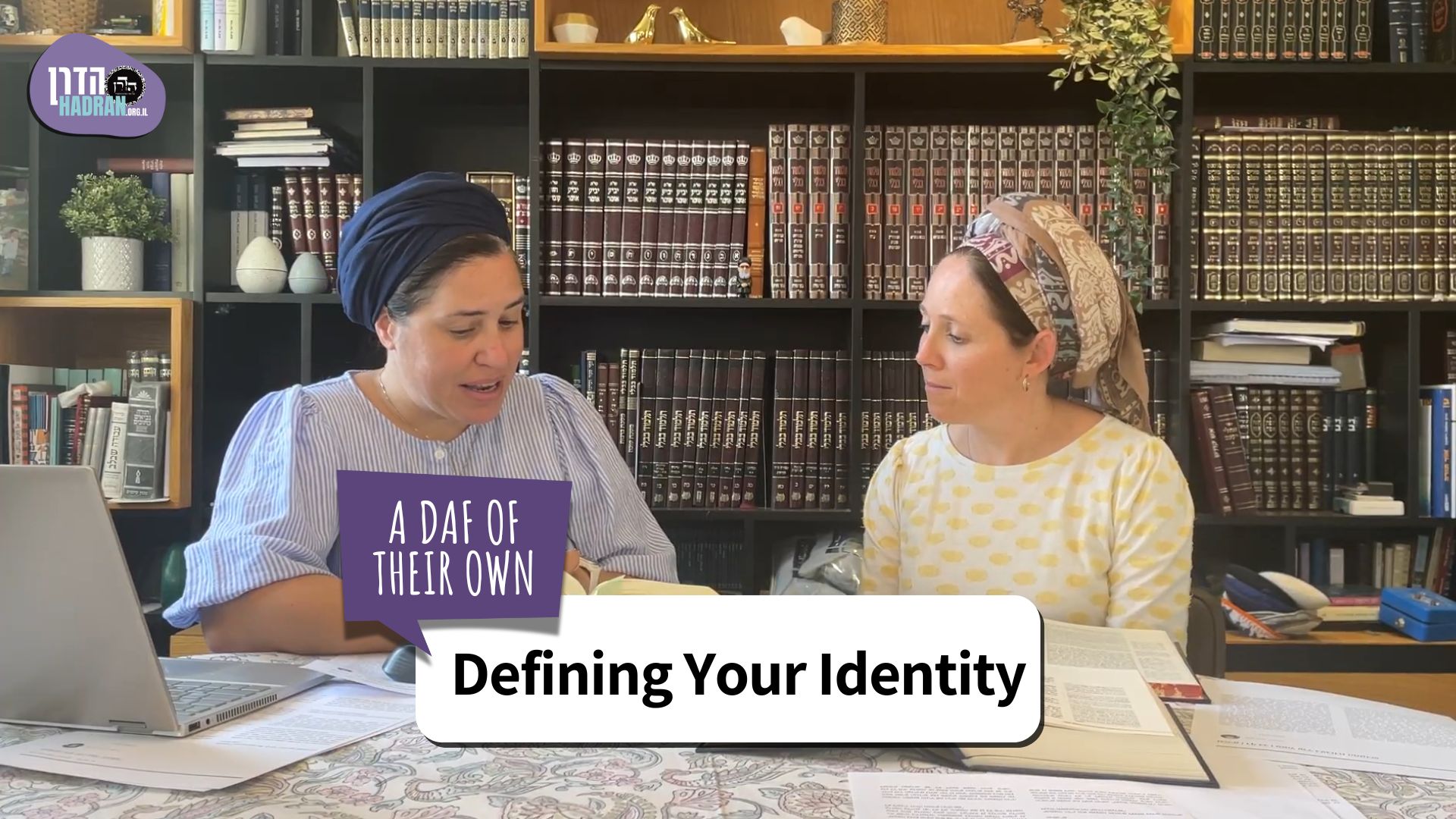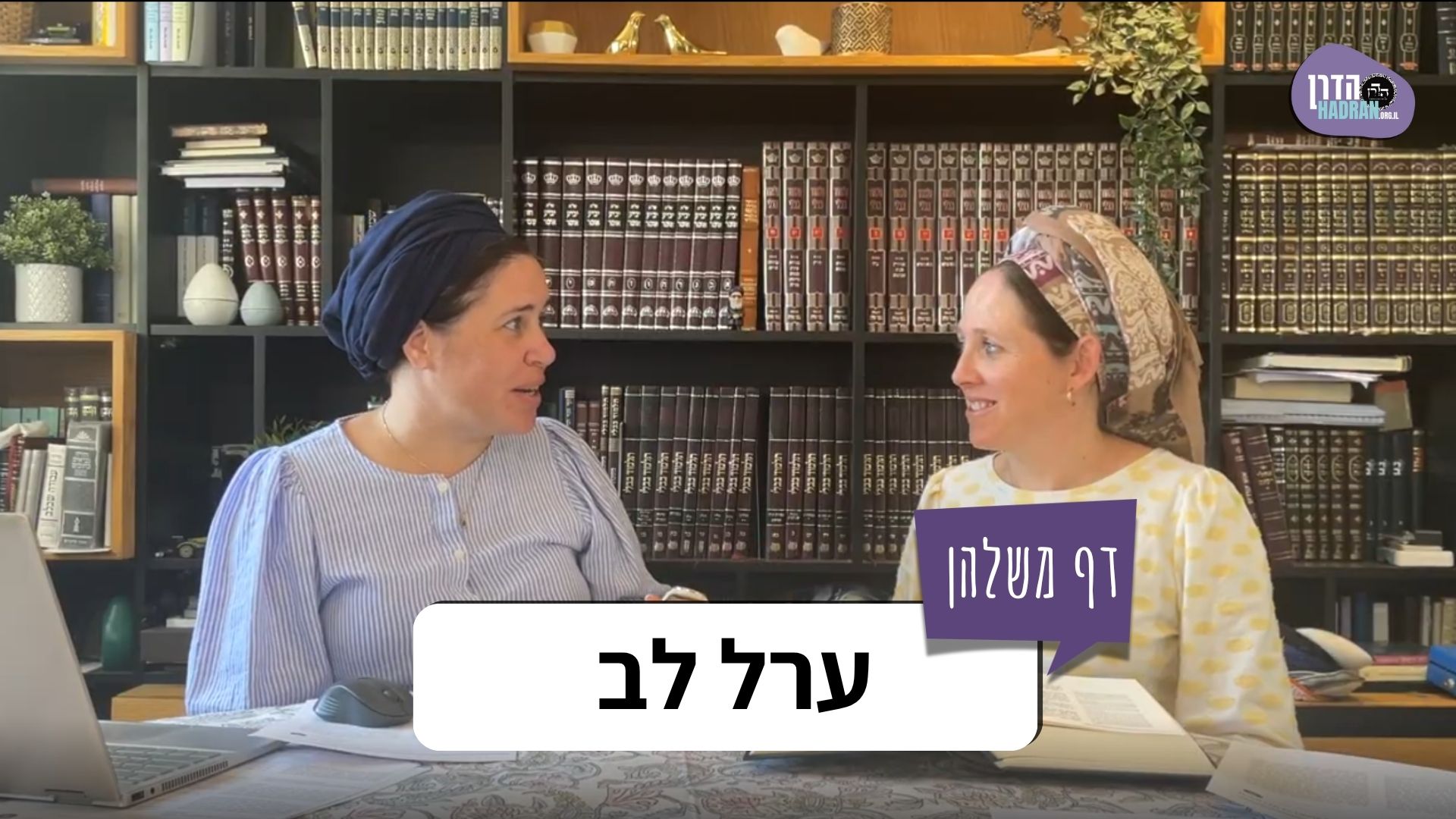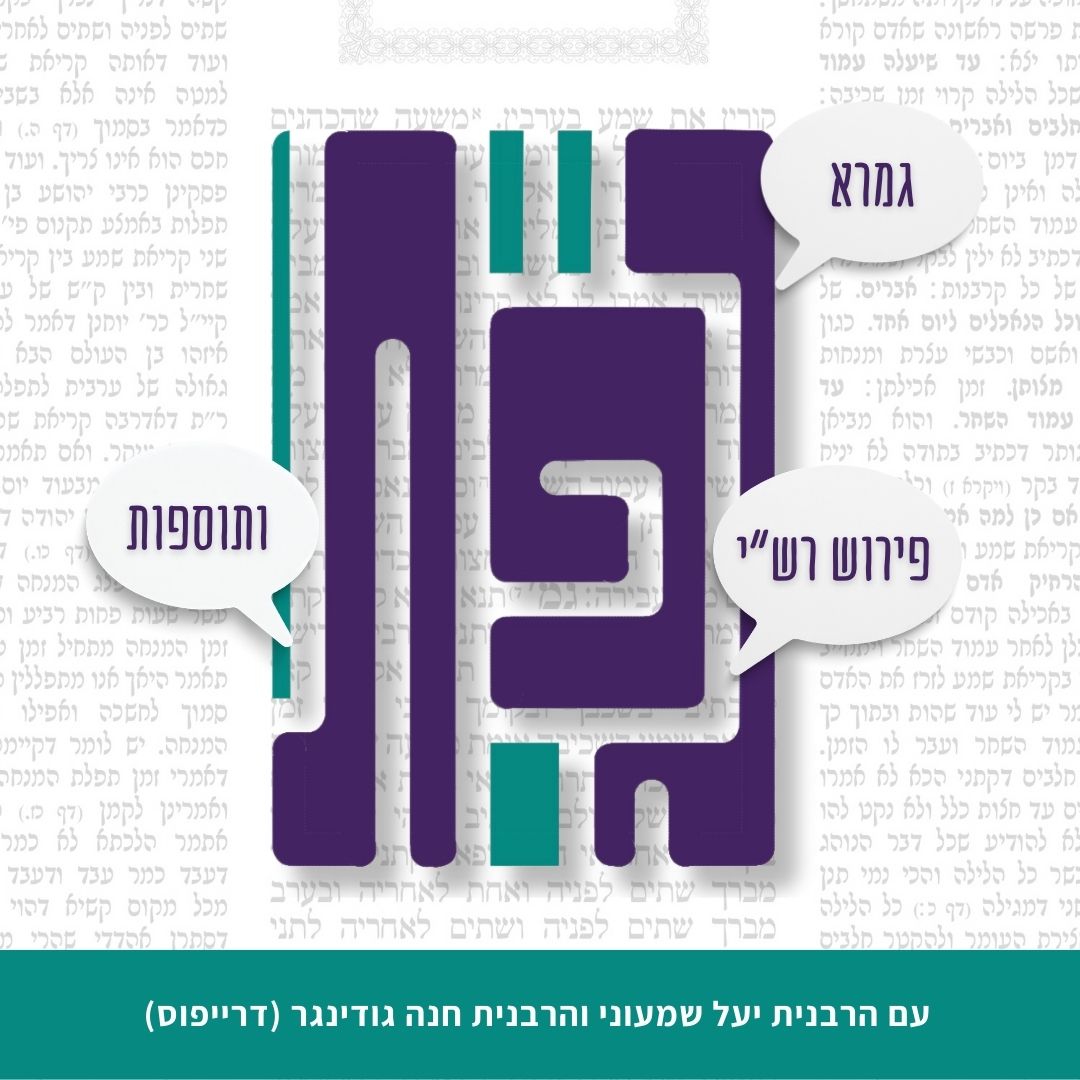What are the signs of a kosher bird? Does one need to have all 4 signs for it to be kosher or is it enough to have only one or some of them?
This month’s learning is sponsored by Beth Balkany in honor of their granddaughter, Devorah Chana Serach Eichel. “May she grow up to be a lifelong learner.”
Want to dedicate learning? Get started here:


This month’s learning is sponsored by Beth Balkany in honor of their granddaughter, Devorah Chana Serach Eichel. “May she grow up to be a lifelong learner.”
Delve Deeper
Broaden your understanding of the topics on this daf with classes and podcasts from top women Talmud scholars.
New to Talmud?
Check out our resources designed to help you navigate a page of Talmud – and study at the pace, level and style that fits you.
The Hadran Women’s Tapestry
Meet the diverse women learning Gemara at Hadran and hear their stories.
Chullin 61
מה נשר מיוחד שאין לו אצבע יתרה וזפק ואין קורקבנו נקלף ודורס ואוכל טמא אף כל כיוצא בו טמא תורין שיש להן אצבע יתרה וזפק וקורקבן נקלף ואין דורסין ואוכלין טהורין אף כל כיוצא בהן טהורין אמר אביי לא נאמר פירושן מדברי תורה אלא מדברי סופרים
Just as a nesher is unique in that it has no extra digit or crop, and its gizzard cannot be peeled, and it claws its prey and eats it, and it is non-kosher, so too, all like birds with these four signs are non-kosher. And just as doves and pigeons, which have an extra digit and a crop, and whose gizzard can be peeled, and do not claw their food and eat it, are kosher, as they are fit for sacrifice on the altar (see Leviticus 1:14), so too, all like birds with these four signs are kosher. If so, why does the mishna state that the signs were not stated in the Torah? Abaye said: The mishna means that the explanation of the signs of a kosher bird was not stated in the Torah. Rather, one learns it from the statements of the Sages, i.e., the baraita.
תני רבי חייא עוף הבא בסימן אחד טהור לפי שאין דומה לנשר נשר דלית ליה כלל הוא דלא תיכול הא איכא דאית ליה חד תיכול
Rabbi Ḥiyya teaches: A bird that comes before a person with one sign of a kosher bird, and which is not listed in the Torah as non-kosher, is kosher, since it is unlike a nesher. The verse did not need to state that the nesher is non-kosher, since one could have inferred this from the list of other non-kosher birds. Rather, the verse mentions the nesher specifically to indicate that it is only a bird like a nesher, which has none of the signs of a kosher bird, that you shall not eat. But if there is a bird that has even one of the signs, you may eat it.
ולילף מתורין מה תורין דאיכא כולהו ארבעה אף ה”נ עד דאיכא כולהו ארבעה
The Gemara asks: But why learn specifically from the case of a nesher? Let one derive the opposite from the case of doves: Just as doves, which the Torah mentions explicitly as kosher, have all four signs, so too here, no other bird is kosher unless it has all four signs.
אם כן שאר עופות טמאין דכתב רחמנא למה לי
The Gemara responds: If it is so that one learns from the case of a dove, why do I need the rest of the non-kosher birds that the Merciful One wrote? Since none of them has all four signs of a kosher bird, their non-kosher status could simply be inferred from the case of a dove. Rather, since the Torah states explicitly that they are non-kosher, it follows that one does not learn from the case of a dove.
ונילף מינייהו מה התם תלתא ולא אכלינן אף כל תלתא ולא ניכול וכל שכן תרי וחד
The Gemara objects: But let us derive instead from them, i.e., the rest of the non-kosher birds, which each have only three signs, the following: Just as there, those birds have three of the signs of a kosher bird mentioned in the mishna, and we still do not eat them, so too, all other birds that have three signs should have the same halakhic status, and we will not eat them. And all the more so should this apply to a bird that has only two signs or one.
אם כן עורב דכתב רחמנא למה לי השתא דאית ליה תלתא לא אכלינן דאית ליה תרי מיבעיא
The Gemara responds: If so, why do I need the crow that the Merciful One wrote among the non-kosher birds? Now that it is established that we do not eat any bird that has three signs, is it necessary to mention the crow, which has only two? Rather, those birds explicitly listed as non-kosher are prohibited, and all other birds with any number of signs are kosher.
ולילף מעורב מה התם תרי לא אף כל תרי לא א”כ פרס ועזניה דכתב רחמנא למה לי השתא דאית ליה תרי לא אכלינן דאית ליה חד מיבעיא
The Gemara objects: But one should derive instead from a crow: Just as there, a bird with two signs is not kosher, so too any other bird that has only two signs is not kosher. The Gemara responds: If so, why do I need the peres and the ozniyya that the Merciful One wrote among the non-kosher birds? Now that it is established that we do not eat any bird that has two signs, is it necessary to mention these birds, which have only one? Rather, even birds that have only one sign are kosher, save those mentioned explicitly in the Torah as non-kosher.
וניגמר מפרס ועזניה א”כ נשר דכתב רחמנא למה לי השתא דאית ליה חד לא אכלינן דלית ליה כלל מיבעיא אלא נשר דלית ליה כלל הוא דלא תיכול הא דאית ליה חד אכול
The Gemara objects: But let us learn instead from the peres and ozniyya themselves that all other birds with only one sign are non-kosher. The Gemara responds: If so, why do I need the nesher that the Merciful One wrote? Now that it is established that we do not eat any bird that has one sign, is it necessary to mention the nesher, which has none? Rather, the Torah mentions the nesher to indicate that it is a nesher, which has none of the signs of a kosher bird, that you shall not eat. But if you find any bird that has even one of the signs, you may eat it.
ואלא טעמא דכתב רחמנא נשר הא לאו הכי הוה אמינא לילף מפרס ועזניה הוה ליה פרס ועזניה שני כתובין הבאין כאחד ושני כתובין הבאין כאחד אין מלמדין
The Gemara objects: But if so, the reason for eating birds with even one sign is only that the Merciful One wrote: “Nesher.” One can infer, then, that if not for this, I would say: Derive from the peres and ozniyya that any bird with one sign is non-kosher. But that cannot be, since the peres and ozniyya are two verses that come as one, i.e., that teach the same matter, and as a rule, two verses that come as one do not teach a principle.
גמירי דאיכא בהאי ליכא בהאי ודאיכא בהאי ליכא בהאי
The Gemara responds: It is learned as a tradition that the sign present in this, the peres, is absent in that, the ozniyya, and that which is present in that is absent in this. Accordingly, this is not a case of two verses that come as one, since each case would teach only that any other bird with only its respective sign is non-kosher. Consequently, it would have been possible to derive from them that any bird with only one sign is non-kosher. The verse therefore states: “Nesher,” to indicate otherwise.
מכדי עשרים וארבעה עופות טמאים הוו אי אפשר דחד דאיכא בהנך ליכא בהני והוו להו שני כתובים הבאים כאחד
The Gemara persists: Now, there are twenty-four non-kosher birds mentioned in the verses. It is impossible that the one sign present in these, the peres and ozniyya, respectively, is absent in all those other birds. Consequently, the mentioning of the peres, ozniyya, and the other birds constitutes two verses that come as one. If so, one could not have derived from the cases of the peres and ozniyya that a bird with one sign is not kosher, and the inclusion of the nesher is unnecessary.
גמירי עשרים וארבעה עופות טמאים הוו וארבעה סימנין תלתא הדרי בכולהו עשרים מהם שלשה שלשה ותרי בעורב חד בפרס וחד בעזניה דאיתיה בהא ליתיה בהא מהו דתימא ליליף מיניה כתב רחמנא נשר נשר דלית ליה כלל הוא דלא תיכול הא איכא דאית ליה חד אכול
The Gemara responds: It is learned as a tradition that there are twenty-four non-kosher birds, and four signs of a kosher bird. The same three signs can be found in all of them, with the exception of either the peres or the ozniyya. Twenty of them have all three signs, and two of those signs can be found in a crow. One sign is found in a peres and one in an ozniyya, and the sign present in this is absent in that, i.e., one of them has the fourth sign, which is absent from the other twenty-three non-kosher birds. Lest you say: Derive from it that any other bird with only that sign is non-kosher, the Merciful One wrote about the nesher to indicate: It is a nesher, which has none of the signs of a kosher bird, that you shall not eat. But if there is any bird that has even one of the signs, you may eat it.
אלא תורין דכתב רחמנא למה לי אמר רב עוקבא בר חמא לקרבן אמר רב נחמן
The Gemara asks: But if one learns from nesher that a bird with even one sign is kosher, why do I need the doves that the Merciful One wrote are kosher, which have all four? Rav Ukva bar Ḥama said: The dove was not mentioned to teach that it is kosher, but rather to teach that it is the only bird fit to be sacrificed as an offering. Rav Naḥman says:


